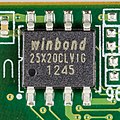| Odin | |
|---|---|
 Odin 3.14 running on a Windows 11 machine, with a device ready for flashing plugged in | |
| Developer | Samsung |
| Stable release | |
| Operating system | (v3) Windows (v4) Linux |
| Available in | English |
Odin is a utility software program developed and used by Samsung internally which is used to communicate with Samsung devices in Odin mode (also called download mode) through the thor protocol [2] . It can be used to flash a custom recovery firmware image (as opposed to the stock recovery firmware image) to a Samsung Android device. Odin is also used for unbricking certain Android devices. [3] Odin is the Samsung proprietary alternative to Fastboot.
Contents
There is no account of Samsung ever having officially openly released Odin, [4] though it is mentioned in the developer documents for Samsung Knox SDK [5] and some documents even instruct users to use Odin. [6] Some other docs on Knox SDK reference "engineering firmware", [7] [8] which presumably can be a part of the Knox SDK along with Odin. Publicly available binaries are believed to be the result of leaks. The tool is not intended for end-users, but for Samsung's own personnel and approved repair centers. [9]

